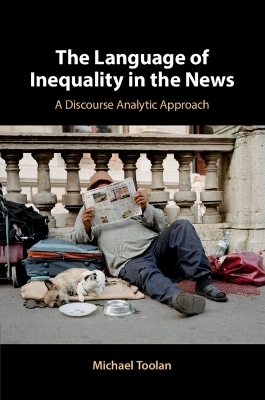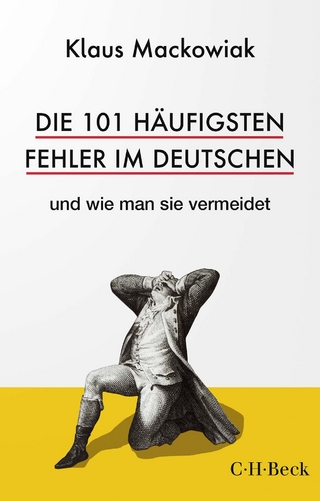
The Language of Inequality in the News
Cambridge University Press (Verlag)
978-1-108-46420-8 (ISBN)
Why in the early 1970s does The Times reject the idea of a national lottery, as rewarding luck not merit and effort, but warmly welcome one by the 1990s? Why in the 1970s do the Daily Mail's TV reviews address serious contemporary themes such as class- and race-relations, whereas forty years later they are largely concerned with celebrities, talent shows, and nostalgia? Why does the Conservative Chancellor in the 2010s mention 'Britain' so very often, when the Conservative Chancellor in the 1970s scarcely does at all? Covering news stories spanning fort-five years, Michael Toolan explores how wealth inequality has been presented in centre-right British newspapers, focusing on changes in the representation may have helped present-day inequality seem justifiable. Toolan employs corpus linguistic and critical discourse analytic methods to identify changing lexis and verbal patterns and gaps, all of which contribute to the way wealth inequality was represented in each of the decades from the 1970s to the present.
Michael Toolan is Professor of English Language at the University of Birmingham. He has been researching in literary linguistics and discourse analysis for many years, and has published extensively on Stylistics and Narrative. He is editor of the Journal of Literary Semantics, and is current Chair of the Poetics and Linguistics Association.
Part I. Analysing the Evolving Press Discourse of Contemporary UK Inequality: 1. Increased wealth inequality in the UK; 2. Why does increasing wealth inequality matter?; 3. Facts, discourse, myths; 4. 'Ethical' differentiation; 5. Inequality as 'British' once more; 6. Why The Times and the Daily Mail?; 7. Spreading the word about the new inequality: the news media; 8. Landmarks in the politics of language tradition; 9. Language-oriented critical discourse analysis: a brief survey; 10. Corpus linguistic methods for exploring the ideology in discourse; 11. Theoretical and methodological assumptions of this study; 12. Brief outline of the chapters; 13. Political affiliations; Part II. What's Fair and Unfair in The Times: 14. The language of fairness; 15. Why concentrate on fair and unfair?; 16. The 1971 and 2011 selections of fair and unfair stories; 17. A national lottery; 18. Industrial relations in 1971: strikes and unfair dismissal; 19. Industrial relations in 2011: the burdens of employment law and 'abuse' of tribunals; 20. Mr Marples's manifesto for the control of fair incomes; 21. The squeezed middle and fair pay in 2011; 22. Fair rents, fair housing; 23. Pensions 'reform'; 24. Fair and unfair in other contexts; 25. Conclusions; Part III. Budgets and Burdens, from Barber to Osborne: 26. Introduction; 27. Style and genre differences between Barber 1971 and Osborne 2011; 28. Lexical contrasts; 29. We in Osborne; 30. Fair and help in Osborne; 31. Taxation; 32. The disappearing burden of taxation; 33. Chancellors' metaphors and the stories they tell: ruts and dust versus the march of the makers; 34. The editorial reception of the Barber and Osborne budgets in The Times and the Daily Mail; Part IV. Peter Black, Christopher Stevens, Class and Britain: 35. The TV reviewer as spokesperson of everyday ideology: Peter Black and Christopher Stevens; 36. General topics in Black and Stevens Compared; 37. Methodology; 38. Peter Black on class; 39. Class and other values in Christopher Stevens, 2013; 40. Equal and fair in CS and PB; 41. Coronation Street, sex and race, then and now; 42. Key semantic domains in Black's and Stevens's journalism: a comparative analysis; 43. The meanings of Britain and the British then (in PB) and now (in CS); 44. Conclusion; Part V. Forty-Five Years of Luddite Behaviour: 45. Ned Ludd and Robin Hood; 46. The Luddites; 47. Luddite and Luddites: grammar, meaning, and frequency; 48. Luddite in the early 1970s in The Times: a preliminary survey; 49. Luddite/Luddites used politically in The Times and the Mail during the first Thatcher term; 50. Luddite/s after June 1983; 51. The Miners' Strike of 1984-5; 52. Concluding remarks: the Luddite narrative; Part VI. Forty-Five Years of Robin Hood: 53. Powerful names; 54. Robin Hood in The Times: preliminary profile; 55. Robin Hood in the Daily Mail: preliminary profile; 56. Robin Hood in the 1970s; 57. Grunwick; 58. Robin Hood in Mrs Thatcher's 1980s and John Major's 1990s; 59. Keynes, not Robin Hood; 60. Bishops more progressive than Labour; 61. Gordon Brown as (nearly) Robin Hood: the New Labour years (1997 to 2010); 62. Robin Hood since 2010; 63. Conclusion; Part VII. Conclusion.
| Erscheinungsdatum | 09.03.2024 |
|---|---|
| Zusatzinfo | Worked examples or Exercises |
| Verlagsort | Cambridge |
| Sprache | englisch |
| Themenwelt | Geisteswissenschaften ► Sprach- / Literaturwissenschaft ► Sprachwissenschaft |
| Sozialwissenschaften ► Kommunikation / Medien ► Journalistik | |
| ISBN-10 | 1-108-46420-3 / 1108464203 |
| ISBN-13 | 978-1-108-46420-8 / 9781108464208 |
| Zustand | Neuware |
| Informationen gemäß Produktsicherheitsverordnung (GPSR) | |
| Haben Sie eine Frage zum Produkt? |
aus dem Bereich


